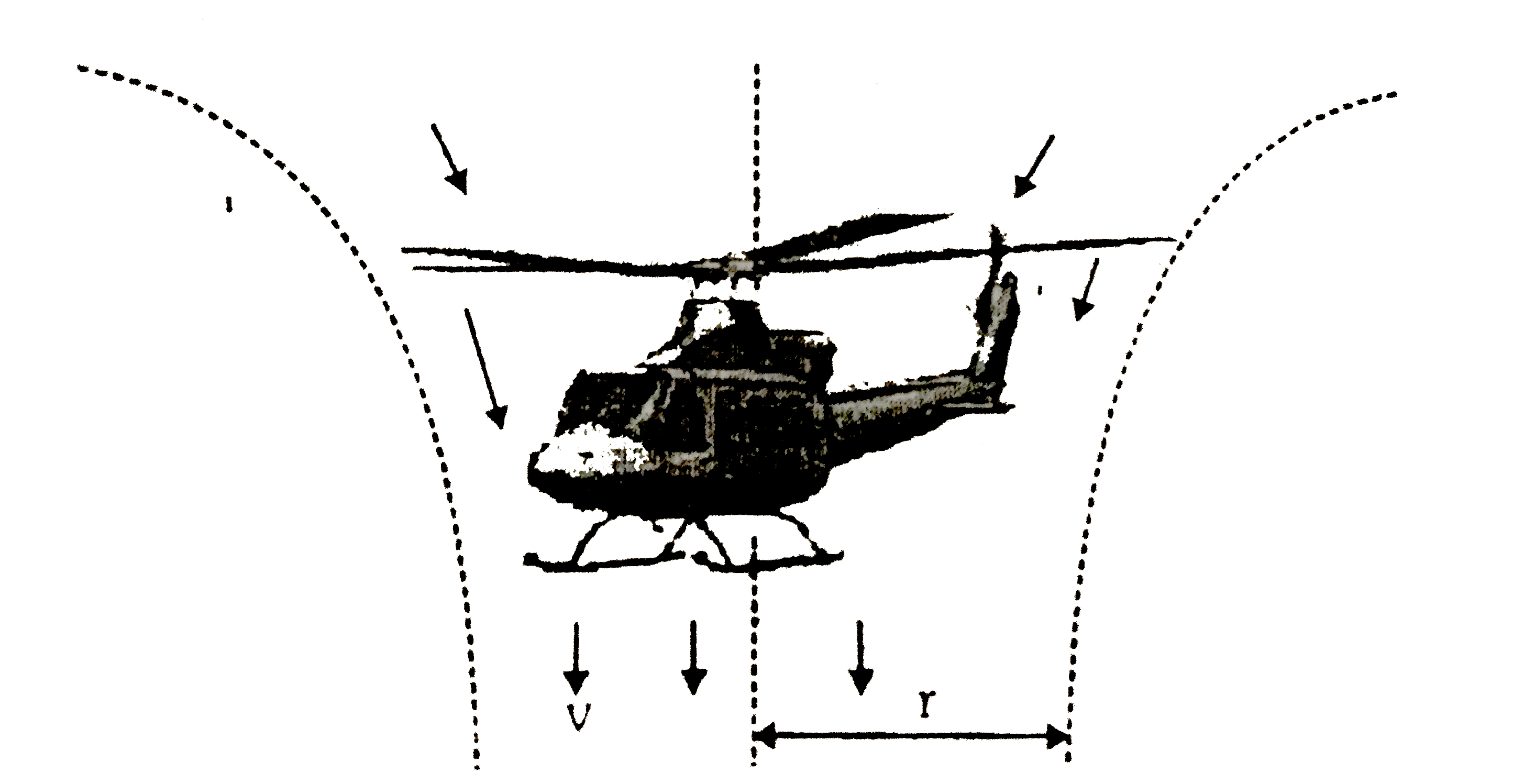The helicopter has a mass m and maintains its height by imparting a downward momentum to a column of air defined by the slipstream boundary as shown in figure. The propeller blades can project a downward air speed v, where the pressure in the stram below the blades is atmospheric and the radius of the circular cross section of the slipstream is r. Neglect any rotational energy of the air, the temperature rise due to air friction and any change in air density ρ.

If the power is doubled, the acceleration of the helicopter is :-
A
(41/2)g
B
(41/3)g
C
(41/2−1)g
D
(41/3−1)g
Video Solution
Text Solution
The correct Answer is:D
P'=2P0=2ρAv30
Let the new velocity of air pushed down be v
ρAv30=2ρAv30
v=21/3v0
New thrust F=ρAv2
=ρA22/3v20
=(mg)41/3 [mg=ρAv20]
∴ Acceleration =a=Fnetm=Fnew−F0m
=mg41/3−mgm=(41/3−1)
|
Topper's Solved these Questions
- CENTRE OF MASSBOOK - ALLENCHAPTER - CENTRE OF MASSEXERCISE - EXERCISE-IV A
32 Videos
- CENTRE OF MASSBOOK - ALLENCHAPTER - CENTRE OF MASSEXERCISE - EXERCISE-IV B
14 Videos
- CENTRE OF MASSBOOK - ALLENCHAPTER - CENTRE OF MASSEXERCISE - EXERCISE-II
43 Videos
- BASIC MATHEMATICS USED IN PHYSICS &VECTORS BOOK - ALLENCHAPTER - BASIC MATHEMATICS USED IN PHYSICS &VECTORS EXERCISE - EXERCISE-IV ASSERTION & REASON
11 Videos
- ELASTICITY, SURFACE TENSION AND FLUID MECHANICSBOOK - ALLENCHAPTER - ELASTICITY, SURFACE TENSION AND FLUID MECHANICSEXERCISE - Exercise 5 B (Integer Type Questions)
3 Videos
Similar Questions
Knowledge Check
The end correction for the vibrations of air column in a tube of circular cross section will be more , if the tube is
AMade thinnerBWidenedCMade shorterDMade longerCompared to the atmospheric air, the alveolar air has
Amore pO2 and less pCO2Bless pO2 and pCO2Cmore pO2 and more pCO2Dless pO2 and less pCO2An air bubble is formed at depth h below the surface of water. The pressure inside the bubble is-
(P0= atmospheric pressure, r = radius of bubble)A4TrB2TrCP0+103hg+2TrDP0+103hg+4Tr
The pressure of confined air is p. If the atmospheric pressure is P, then :-

View SolutionHow is the balance of oxygen in atmospheric air maintained ?
View SolutionOxygen gas is collected by the downward displacement of air.
View SolutionHow does the speed V of sound in air depend on atmospheric pressure P ?
View SolutionHow does the speed v of sound in air depend on the atmospheric pressure P?
View Solution
